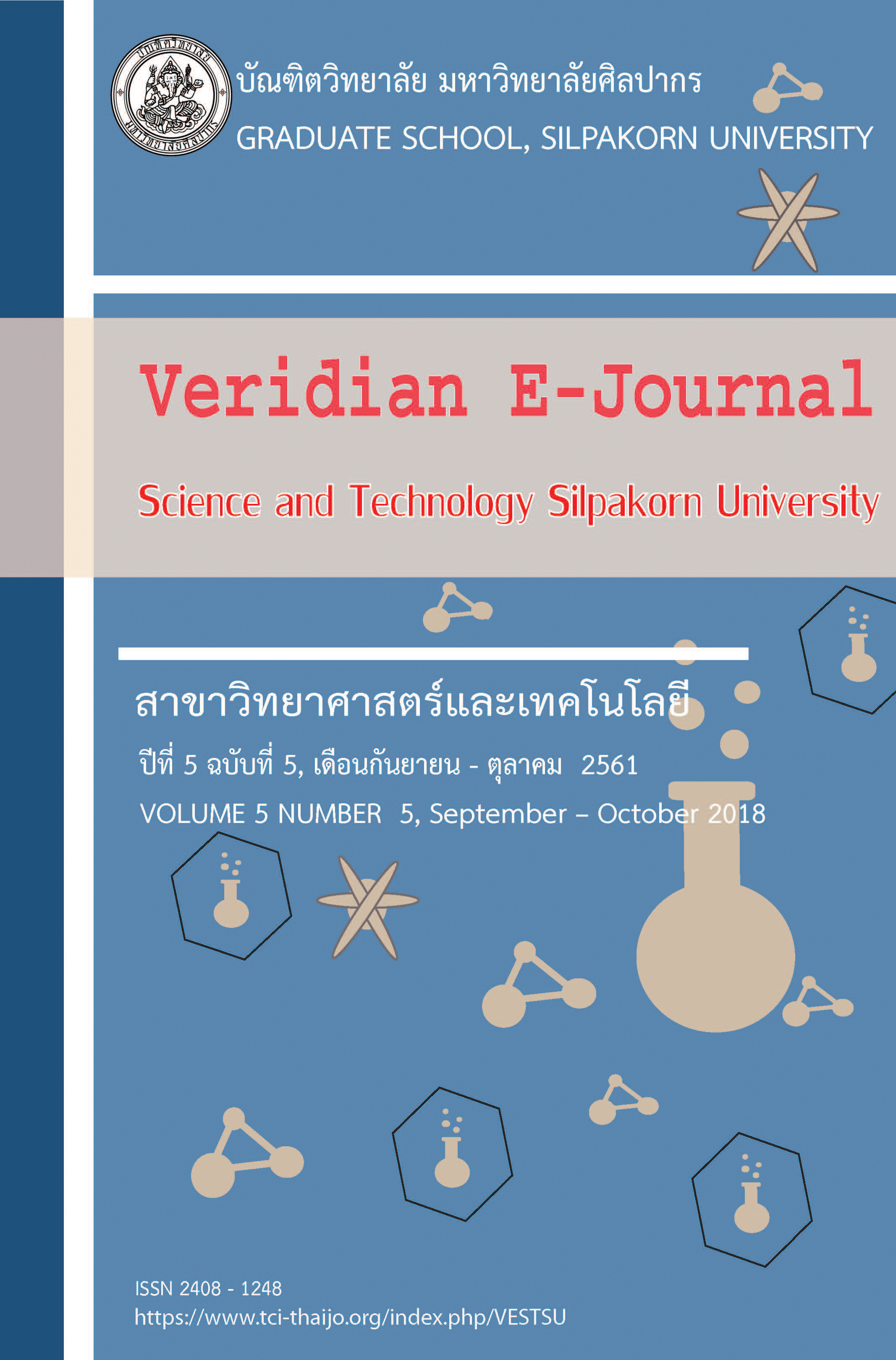ผลกระทบของการเปลี่ยนแปลงสภาพภูมิอากาศต่อพื้นที่เพาะปลูกฤดูแล้งของ โครงการชลประทานอ่างเก็บน้ำลำแชะ (Climate change Impact on dry season crops of Lam Chae reservoir irrigation project)
Main Article Content
Abstract
การศึกษาผลกระทบของการเปลี่ยนแปลงสภาพภูมิอากาศต่อพื้นที่เพาะปลูกฤดูแล้งของอ่างเก็บน้ำลำแชะ อ.ครบุรี จ.นครราชสีมา โดยใช้ข้อมูลย้อนหลังจำนวน 30 ปี (ปีฐาน) ตั้งแต่ พ.ศ. 2529–2558ใช้แบบจำลอง NAM เพื่อประเมินน้ำไหลลงอ่างเก็บน้ำ แบบจำลองฝนใช้การ แบบจำลองความต้องการน้ำชลประทาน และแบบจำลองระบบ เพื่อกำหนดพื้นที่เพาะปลูกฤดูแล้ง เปรียบเทียบกับกรณีอนาคต เนื่องจากการเปลี่ยนแปลงปริมาณน้ำฝนจากแบบจำลองภูมิอากาศโลก (General circulation models, GCMs) ชุดข้อมูล Global dataset ECHAM4 และเพิ่มความละเอียดข้อมูลโดยแบบจำลอง PRECIS ภายสมมติฐาน A2 จำนวน 30 ปี ตั้งแต่ พ.ศ. 2558–2588 พบว่าปริมาณน้ำไหลลงอ่างเก็บน้ำรายเดือนมีทั้งสูงขึ้นและลดลงเมื่อเทียบกับปีฐาน โดยปริมาณน้ำที่เพิ่มขึ้นจะอยู่ในช่วงต้นฤดูฝนซึ่งมีความสำคัญสำหรับพืชมากกว่าปริมาณน้ำที่ลดลงใน ช่วงปลายฤดูฝน และอัตราการไหลสูงสุดจะเกิดเร็วกว่าเดิมจากเดือนตุลาคมเป็นเดือนกันยายน ด้านความต้องการน้ำชลประทานในอนาคต จะมีค่าใกล้เคียงกับความต้องการน้ำในช่วงปีฐาน โดยในอนาคตมีค่าลดลงเล็กน้อย ทั้งนี้เนื่องจากปริมาณฝนที่เพิ่มขึ้น ทำให้ฝนที่ตกลงมากลายเป็นฝนใช้การมากขึ้น ความต้องการน้ำชลประทานจึงมีแนวโน้มลดลง ส่วนแบบจำลองระบบเมื่อคิดพื้นที่เพาะปลูกฤดูฝนเต็มพื้นที่โครงการ และฤดูแล้งเพาะปลูกตามกราฟกำหนดพื้นที่เพาะปลูกฤดูแล้ง (DSAR Curve) พบว่าผลจากการเปลี่ยนแปลงสภาพภูมิอากาศ ทำให้ได้พื้นที่เพาะปลูกฤดูแล้งเฉลี่ยมากขึ้น จากเดิม 16,353 ไร่ เป็น 19,947 ไร่ ทั้งนี้เนื่องจากปริมาณน้ำที่ไหลเข้าอ่างเก็บน้ำมากขึ้น หลังสิ้นสุดฤดูฝนจึงมีน้ำเหลือในอ่างเก็บน้ำสำหรับเพาะปลูกในฤดูแล้งมากขึ้น ดังนั้นการจัดการทรัพยากรน้ำในอนาคตสำหรับในพื้นที่ศึกษานี้จึงควรมุ่งเน้นถึงการจัดการด้านอุทกภัยมากกว่าการจัดการด้านภัยแล้ง การปรับปรุงอ่างเก็บน้ำให้มีขนาดใหญ่ขึ้นจะทำให้สามารถเก็บกักน้ำได้มากขึ้นเพื่อเพิ่มพื้นที่เพาะปลูกในฤดูแล้งและจะเป็นประโยชน์ในการจัดการอุทกภัยในอนาคต
This research assesses climate change impact on dry season crops of Lam Chae reservoir irrigation project, Khon Buri District, Nakhon Ratchasima Province. During 1986-2015, thirty years historical data was used as baseline period. Several models were used in this study including NAM model to simulate the inflows to the reservoir, Effective Rainfall Model, Irrigation Demand Model, and System Simulation Model to determine dry season irrigation areas of the baseline period in comparison with climate change scenarios. Rainfall data of climate change scenarios were projected by the General Circulation Models (GCM) and ECHAM4 global dataset. Finer spatial resolution rainfall data were produced by PRECIS regional climate modelling system for Emission Scenario A2 during 30-year period of 2015-2045. The study found that monthly inflows of climate change scenario are different from baseline period inflows. Monthly inflows of climate change scenario at the beginning of rainy season important for the irrigation are increased while monthly inflows at the end of rainy season are decreased from the baseline period. Maximum monthly inflow occurs in September that is much earlier than baseline period maximum inflow in October. Future irrigation water demand under climate change scenario is slightly low than that of baseline period. This was because increased rainfall and thus higher effective rainfall for the irrigation was expected for climate change scenario. According to the simulation results of the System Simulation Model when using full rainy season irrigation area and dry season area from the Dry Season Area Reduction Curve (DSAR Curve), it was found that dry season area can increase 16,353 rai from baseline period to 19,947 rai for climate change scenario because of increased monthly inflows to the reservoir. At the end of rainy season, more water is stored in the reservoir for dry season irrigation. Water resources management in this study area should therefore focus more on flood management than drought management in the future. Increasing reservoir storage could be considered to enable more water to be stored for increased dry season area and flood management in the future.

